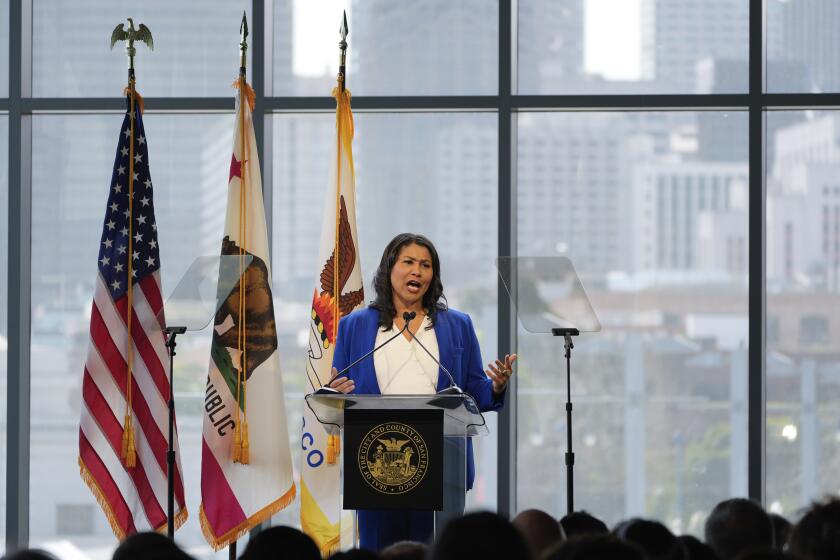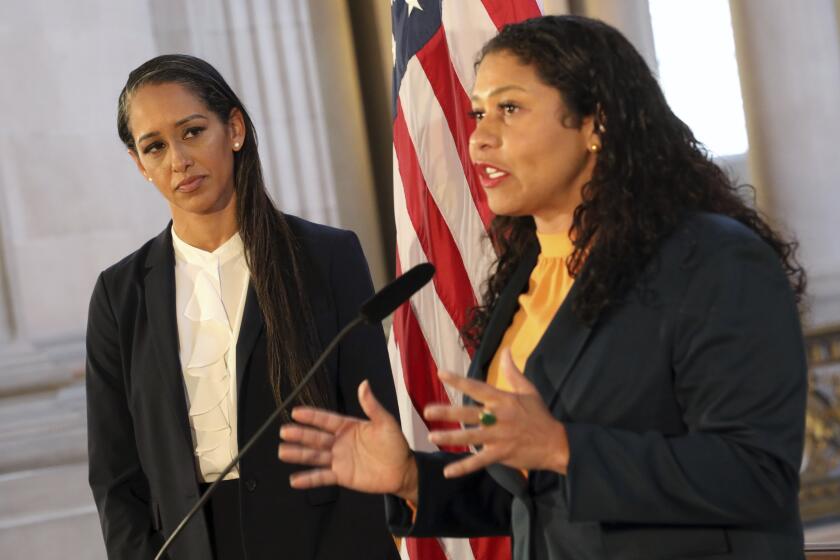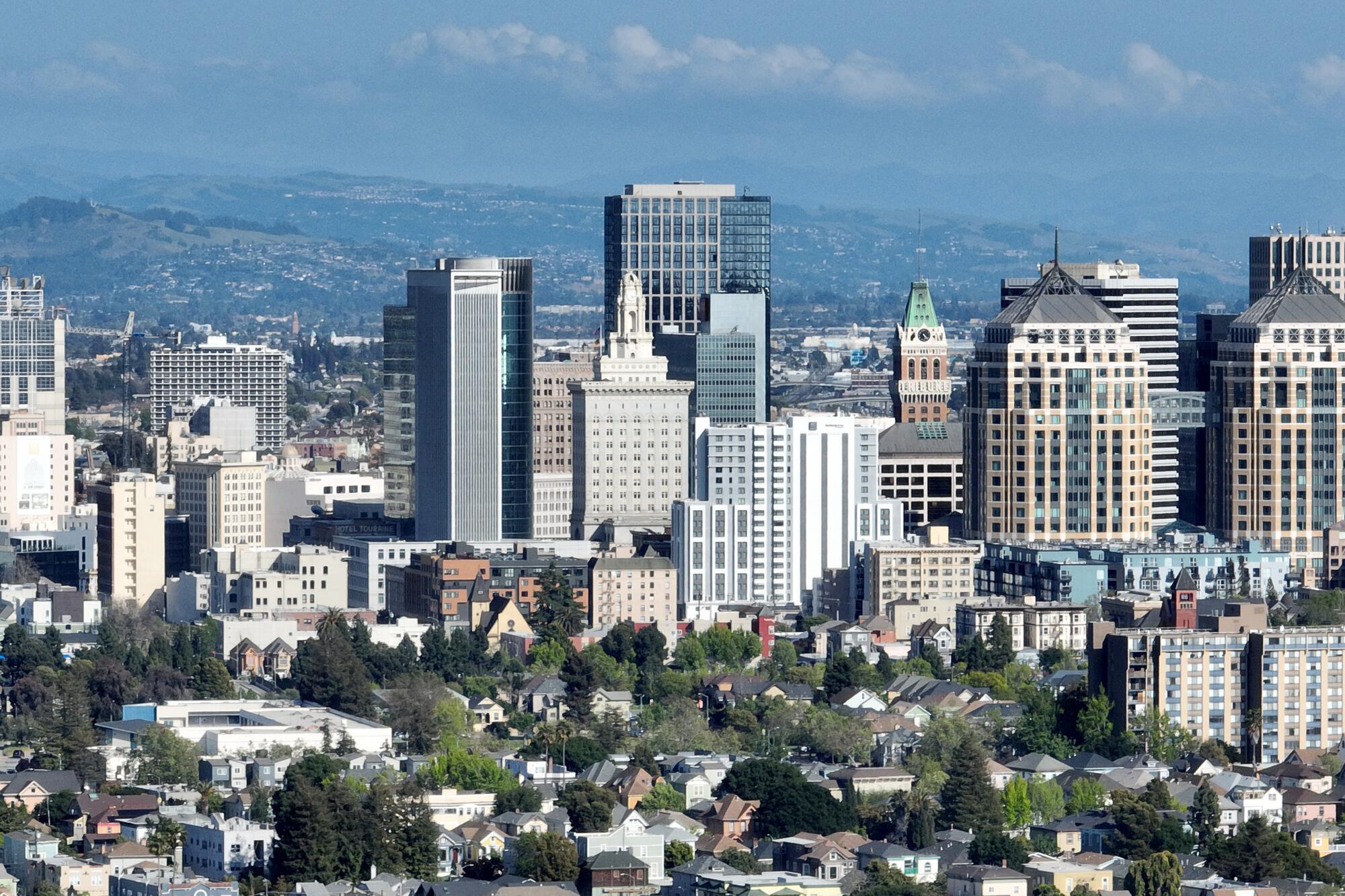
- Share via
OAKLAND — Along gracious, leafy College Avenue, you can luxuriate with a traditional Thai massage, slip into an artisanal cocktail at an Italian spot or claim a grain-free treat for your canine companion at a charming Mediterranean cafe.
Privileged Rockridge hardly seems the sort of neighborhood that would generate grist for the crime blotter. But that changed last year, when one of Oakland’s more upscale enclaves suffered a string of retail break-ins and armed robberies and, most spectacularly, a series of full-frontal assaults on a neighborhood liquor store.
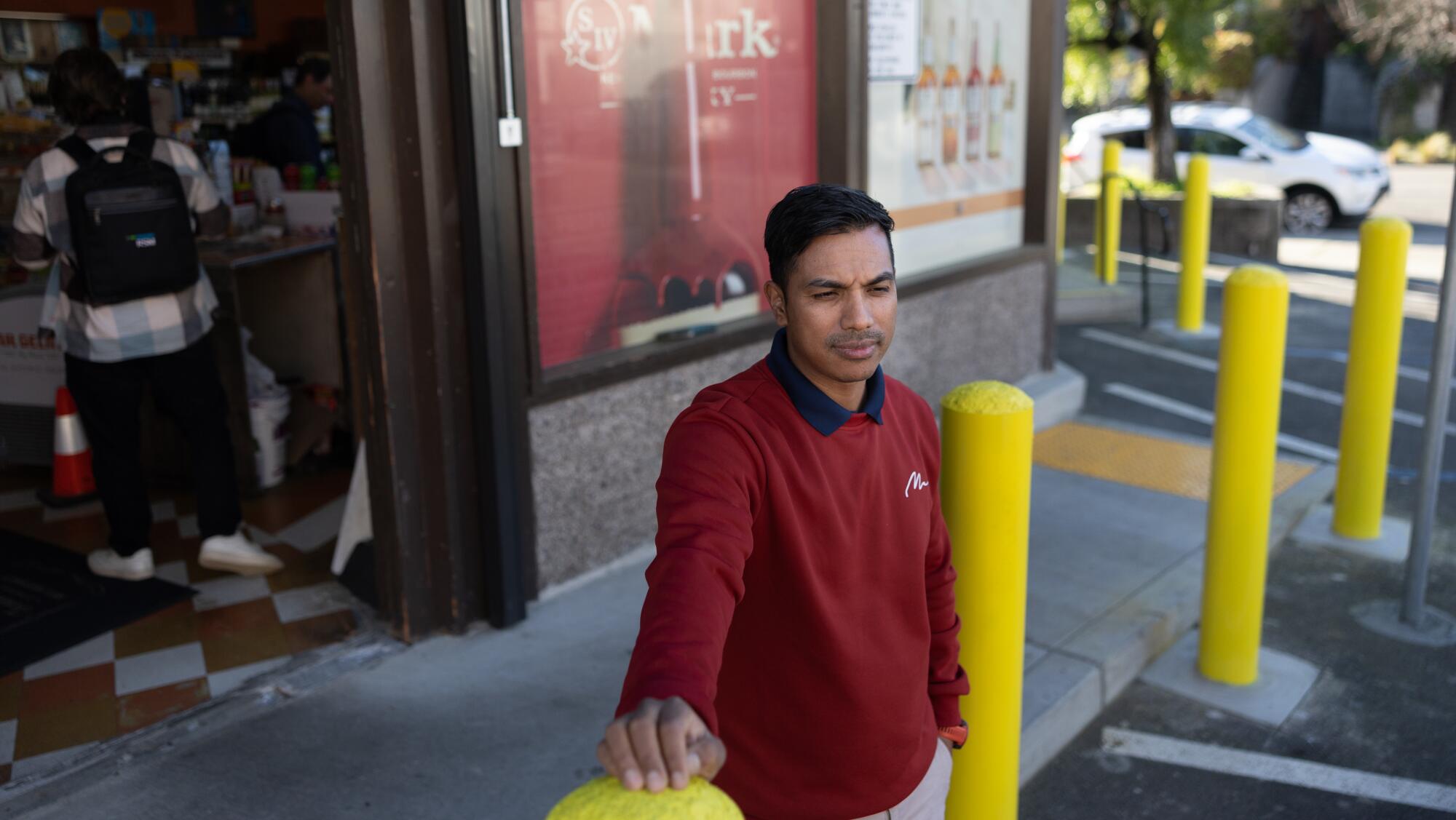
Eddie’s Drive In Liquors, sadly, came to embody its name when thieves plowed a truck through its glass front doors — on four separate occasions in just four months — plundering tens of thousands of dollars’ worth of cigarettes, cognac and other high-end liquor.
In the decade leading up to the pandemic, Oakland was making national headlines because so much was going right: Rockridge and other North Oakland neighborhoods had a high-energy nightlife that offered a chic, soulful alternative to San Francisco. Downtown bustled with people and commerce, and housing was affordable by Bay Area standards.
The city’s distressed east and west ends remained more dangerous terrain, particularly at night, but violent crime rates were nowhere near the highs of the 1980s and ’90s.
That all changed last year, when Oakland found itself in a far harsher spotlight. Crime surged across multiple categories in 2023, including armed assaults and brazen property crimes like the Eddie’s smash-throughs.
In-N-Out Burger and Denny’s were among the high-profile chains to announce they were closing outlets in the city, citing the risks to employees and customers. Kaiser Permanente, a major employer, sent a memo to its downtown workers urging them to stay inside for lunch due to rising daytime street robberies.
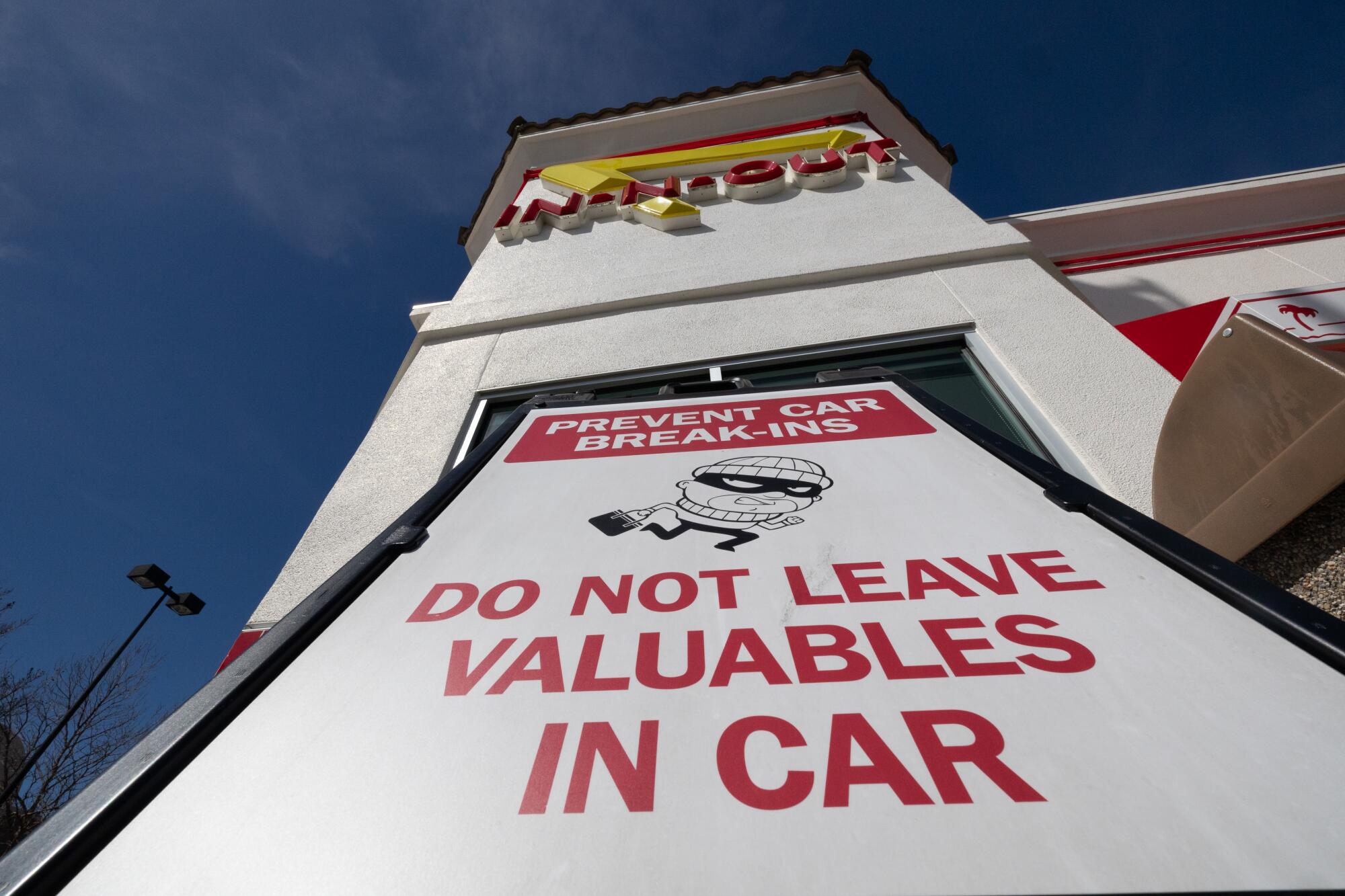
The first two months of 2024 have brought some relief. Crime rates have fallen in several categories, including homicide, aggravated assault, burglary and auto theft. But robberies continue to climb upward, and there is a shared sense in large swaths of Oakland that something has changed. The crimes feel more routine and more brazen. And the crime scenes have shifted into wealthier areas.
Oaklanders and their city leaders agree on the need for a better path forward. But because no one can say definitively what went wrong in 2023, there is heartfelt disagreement over how to fix the problem.
City leaders, haunted by a legacy of police scandals, are hesitant to embrace heightened enforcement as the primary remedy. But addressing what they see as the roots of the problem — pandemic job losses and the stubbornly high rates of poverty and homelessness in some neighborhoods — takes time and sustained attention.
“Everything moves so fast here in Oakland. I feel we need to slow things down and take the time to really repair things,” said Viviana Montano, who works with young people at the social services nonprofit Homies Empowerment. “It will take the whole barrio to uplift our community, to unite as one, to fix our community, to save our city.”
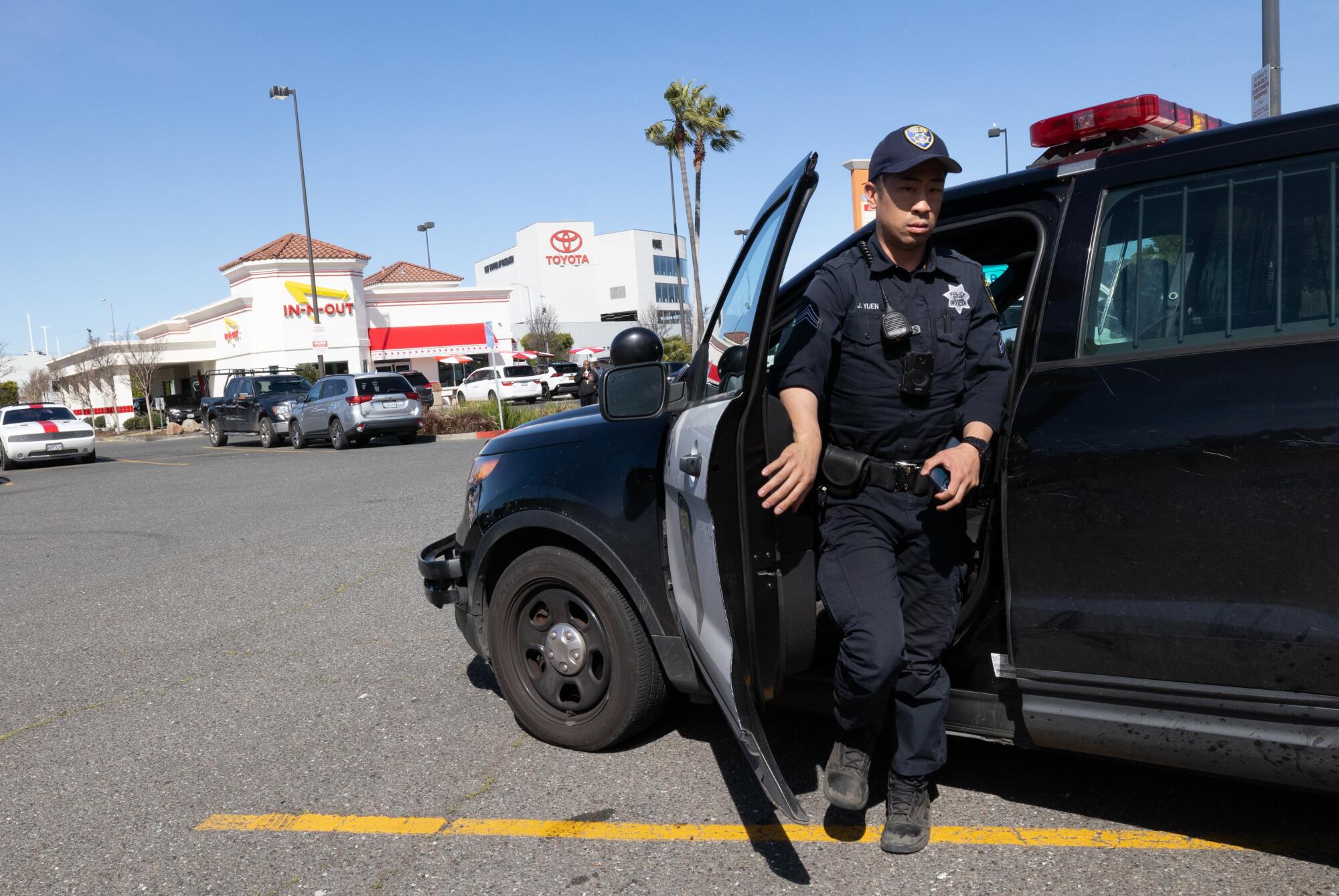
The harshest critics describe Oakland as a “ghost town” of failing businesses and rampant crime. Recall campaigns have been launched against Mayor Sheng Thao and Alameda County Dist. Atty. Pamela Price, both in their first terms in office. John Bigs, who initiated an online petition opposing Thao, blamed the recent crime wave on a lack of funding for police and a delay in filling the empty office of police chief. The introduction to his petition describes a “sense of fear and insecurity that now permeates our neighborhoods.”
Others in the city say it’s too soon to throw out relatively new leaders. They appeal for more time to show how expanding access to housing, jobs and social programs can enhance public safety.
David Muhammad, executive director of the Oakland-based National Institute for Criminal Justice Reform, rejects the bleakest depictions of the city where he grew up. He sees many neighborhoods still bustling. Yet his car has been broken into three times in two years, and he acknowledges he is “much more vigilant than [he] ever was before.”
Muhammad meets monthly for a dinner with community leaders from a range of professions, whose first instinct is not to blame crime on the reforms that aimed to reduce incarceration rates for certain offenses — such as Proposition 47, the 2014 measure that changed certain lower-level drug and property crimes from felonies to misdemeanors and invested in drug and mental health treatment.
“Still, the group is wondering, ‘What is going on?’“ he said. “Certainly, there is something that needs to improve. We love Oakland and want to see it thrive.”
In a bid to address the city’s drug crisis — and the crime and homelessness that come with it — San Francisco voters shifted right in Tuesday’s primary, approving ballot measures that aim to boost enforcement powers.
Many activists trace the crime wave to the COVID-19 lockdowns. Along with job losses, the enduring shift to remote work has emptied out downtown streets. The prolonged closure of schools created another problem, pushing teenagers out of classrooms and into the community, often without positive alternatives.
Crucially, the pandemic also saw a key anti-violence program, Ceasefire, begin to unwind after it was credited by city officials for a 43% reduction in homicides from 2012 to 2017.
The program operates on the principle that a relatively small number of people, between 250 and 400, are most likely to be the perpetrators — and the victims — of violence. Ceasefire pairs people in this target population with life coaches, and also offers them therapy, drug rehabilitation, job training and other services.
Oakland’s homicides dropped to 75 in 2018 — its second-lowest total in more than half a century. One of the nonprofits that helped run Ceasefire estimated that 140 lives were saved over five years.
But in-person visits with the program’s participants stopped during the pandemic. Ceasefire withered. By 2021, reported homicides had spiked to 134, followed by more than 120 each of the next two years.
Mayor Thao declined to be interviewed, but said in a statement that her top priority is “promoting a safer and more prosperous Oakland.” She called restoration of the Ceasefire program a crucial strategy in bringing down crime.
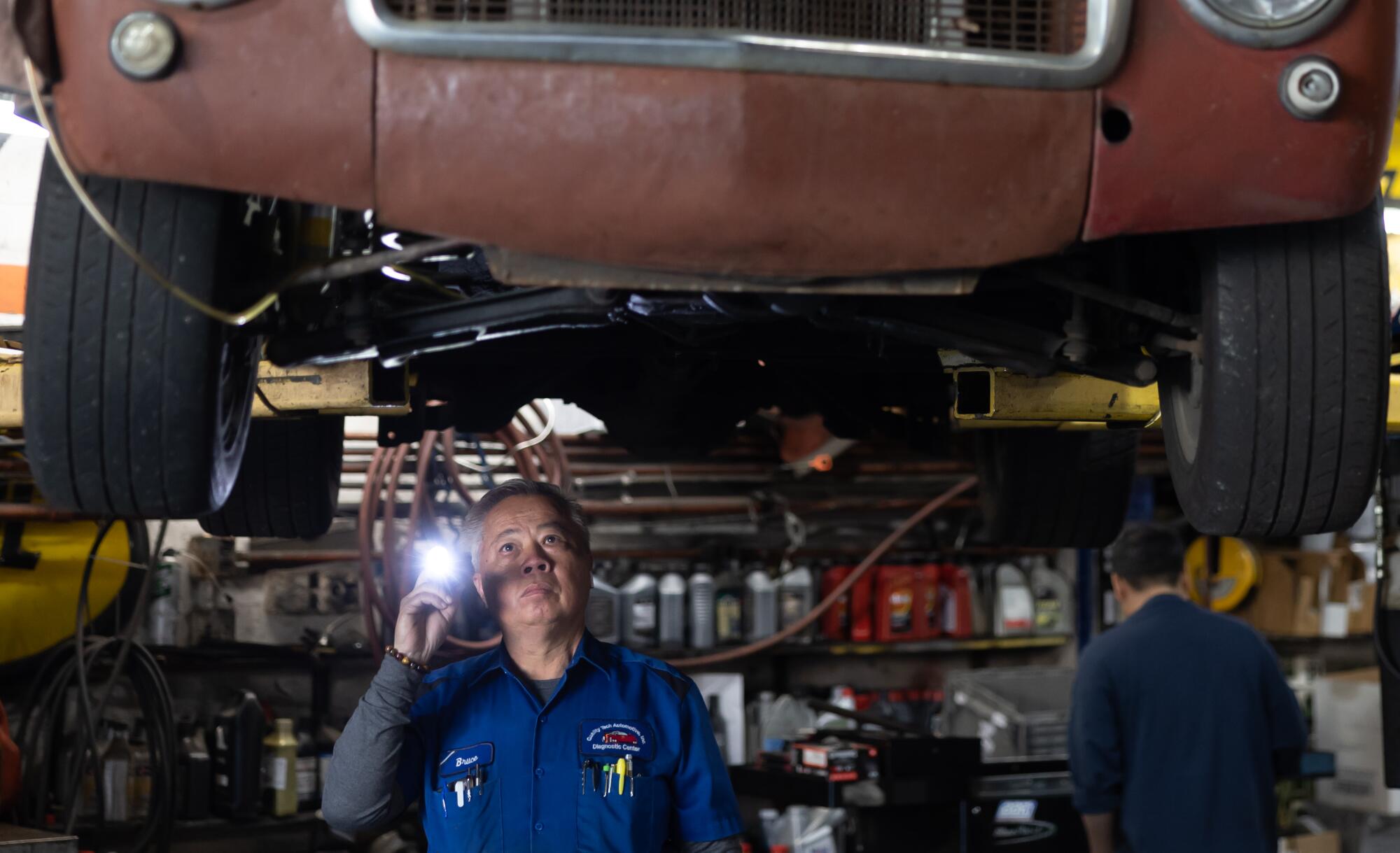
Late last year, Thao named Holly Joshi, a former Oakland Police Department official and nonprofit executive, as chief of the city’s Department of Violence Prevention. Joshi agreed that intervening with people identified as most at risk for and of violence will be key to cutting crime.
“The message to them is, ‘You’re on the police’s radar, our street-level intelligence says you are on your enemy’s radar … and, at this moment, you are at high risk of going to prison or being killed,’“ Joshi said. She added that they are then told: “We love you. We believe in you. There are other options.”
The question of how much faith, and money, to put in the Police Department remains contentious. As a city councilwoman, Thao supported some efforts to rein in police spending, including reducing the number of police academy classes, but she has reversed course. As mayor, her office has touted that she is “investing in a robust Police Department.”
The department had 711 sworn officers in January, up from the 693 when she took office a year earlier, her staff reported. That’s still below the 749 officers it had in 2019.
Thao’s office also said it is working to shift some duties previously handled by police to nonuniformed city workers — for example, directing thousands of mental-health-related calls that are not emergencies to EMTs and community intervention specialists. The city recently announced it would use a state grant to hire at least six more safety “ambassadors” for Chinatown and downtown to respond to less-threatening situations.
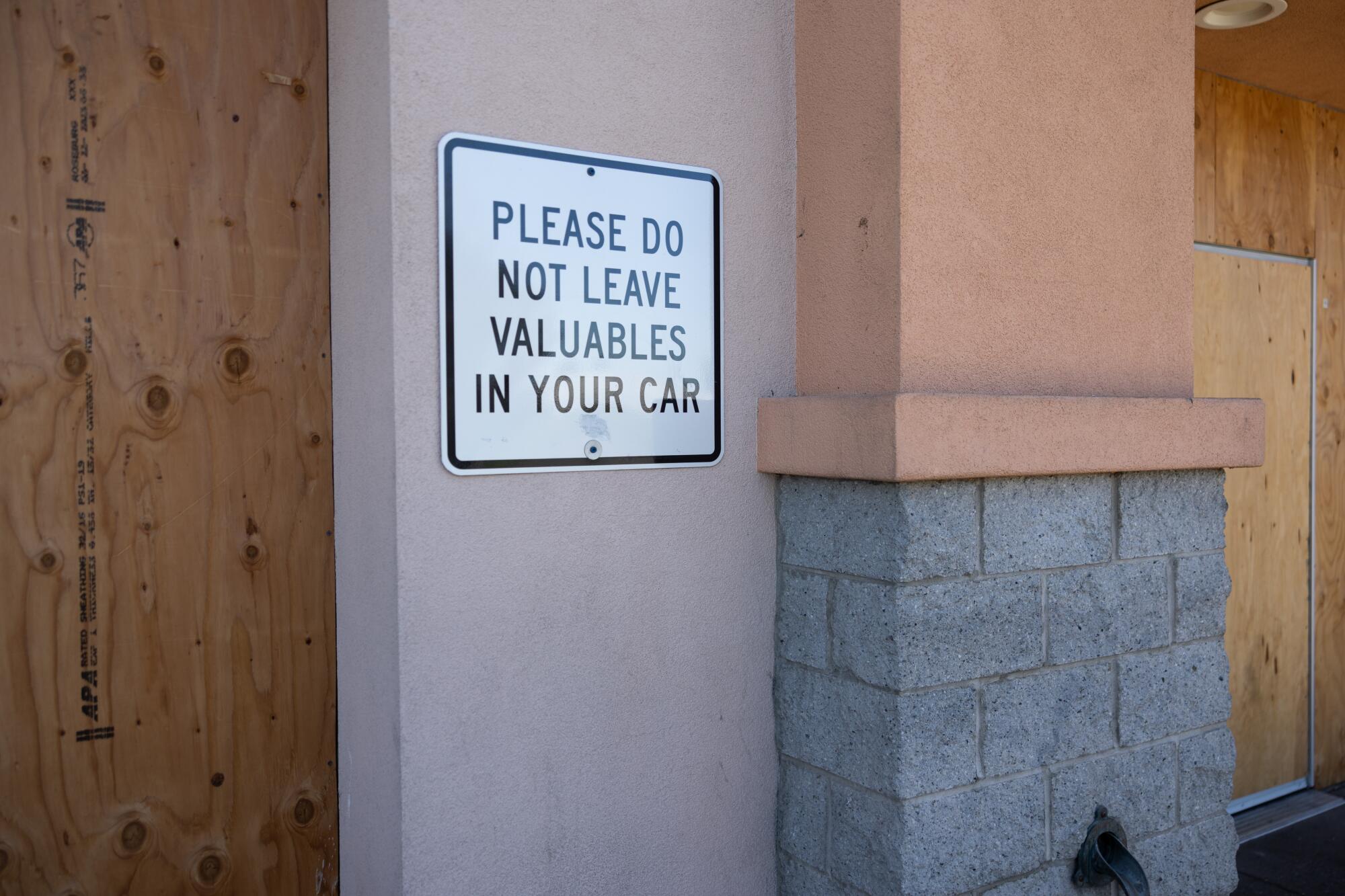
Still, the traditional response of adding more police is a hard sell in this city. The Oakland Police Department has been under federal supervision for more than 20 years, stemming from a scandal in which four officers known as “the Riders” were accused of assaulting and framing West Oakland residents, most of them Black.
Scandals — along with a rotating roster of police chiefs — continued through last year, when Thao fired then-Chief LeRonne Armstrong after an outside investigation found problems in the department’s handling of two officer misconduct cases. An independent arbitrator later sided with the chief, saying in a nonbinding ruling that his firing should be reversed.
“We have a history we can look back on of relying on apprehension and punishment,” said Councilwoman Carroll Fife, a progressive who represents downtown. “That hasn’t worked. Data show that communities with more access to services have less crime.”
The Rev. Harry Williams, a street minister who works with young people, echoed those sentiments.
“Adding more police without more mental health, more school programs, more jobs is like putting a top on a boiling pot,” he said. “Eventually it’s going to boil over.”
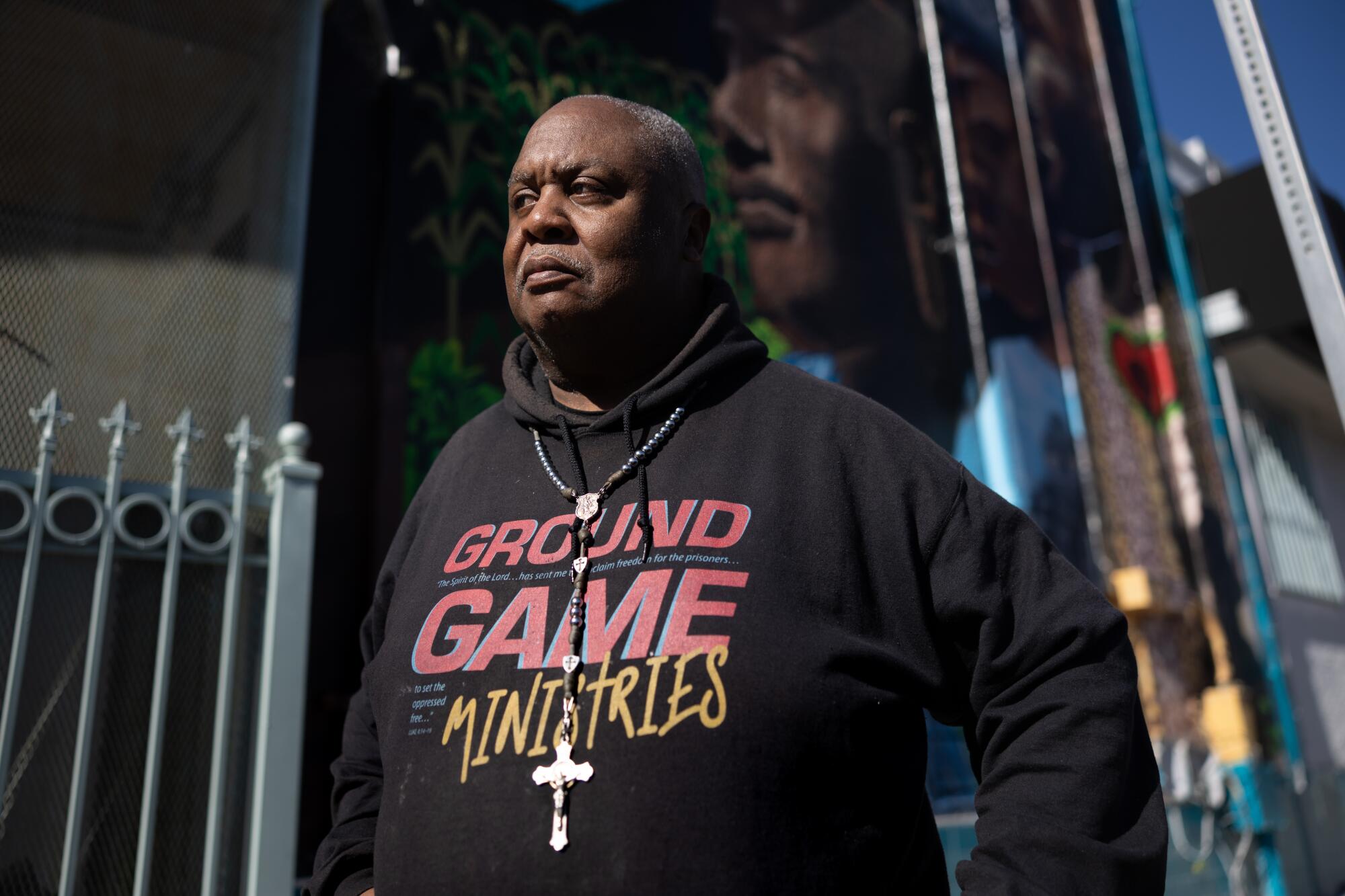
Many retailers, particularly small-business owners, find themselves torn. They are committed to Oakland, they say, but are worn down by a sense of lawlessness. A growing chorus is pressing for a stronger police presence, wanting to see criminals held accountable.
“There are a lot of jobs out there. Everybody is hiring. There are classes out there. So get a job. Get an education,” said Brenda Grisham, who owns tax preparation and beauty supply businesses and helped organize the recall effort against Price. “We have to stop making excuses for people who do not excel.”
Perhaps no crime has become as universally endured in Oakland as “bipping.” That’s the street term for the practice of breaking car windows, usually followed by stealing whatever is inside. In an alarming twist, some thieves are committing the smash-and-grabs while drivers are still at the wheel.
Car burglary reports in 2023 came in at the rate of more than 37 a day — a one-third increase over the daily average from the most recent five years. In the first eight weeks of this year, the rate had fallen to less than half of that. City leaders struggle to explain either trend.
San Francisco is following the lead of more conservative California counties, launching an investigative unit to target fentanyl deaths as homicide cases. That means drug dealers could be charged with murder.
Adding to a sense of unease is a policy that means suspects often get away, even when they are spotted at the crime scene.
Since 2014, Oakland has barred officers from pursuing suspects who are not armed with a gun or involved in a forcible or violent crime. The policy says that “protection of human life shall be the primary consideration” in deciding whether to pursue a suspect.
Late last month, video cameras caught robbers making off with $100,000 worth of jade collectibles from a store on upscale Piedmont Avenue. Responding officers spotted four suspects jumping into a car, but did not follow.
Though “scared and sad,” the store owners pledged to persevere.
Calling conditions in the city “alarming and unacceptable,” Gov. Gavin Newsom in February ordered a “surge” of 120 California Highway Patrol officers into Oakland, a deployment that was repeated this month. Officials said the temporary escalations led to the recovery of 360 stolen vehicles and the arrest of 168 people.
More CHP reinforcements will come as needed, the governor’s office said. And the California Department of Transportation plans to install cameras at more locations along highways and to clean up homeless encampments deemed a risk to public safety.
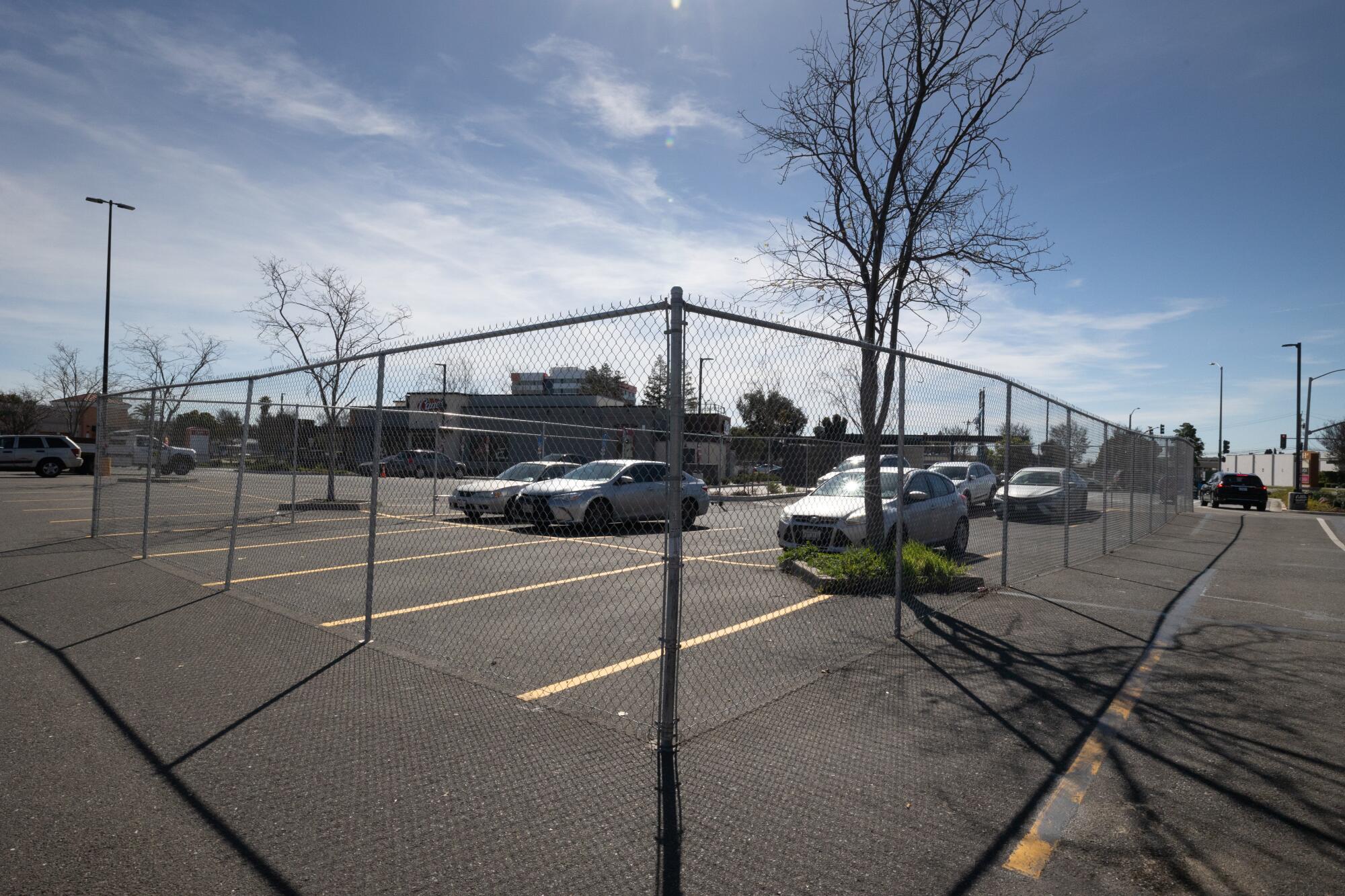
Thao called the state support “a game-changer in helping us hold more criminals accountable.” But some saw the CHP deployments as a media stunt by a governor positioning himself to look tough on crime as he contemplates a run for national office.
“You’re not going to solve decades of oppression and systemic inequality with four days of over-policing,” said Robert Symens-Bucher, a lifelong Oakland resident who works for a nonprofit that mentors young men. “Those resources could be put into programs that would serve the community and actually help people in a sustained way.”
Back at Eddie’s Liquors, owner David Shrestha said he still considers Rockridge a “great neighborhood.” He described how neighbors rallied around the store, showing support by making extra purchases after the last incursion in January.
Shrestha has installed a line of concrete posts along the front of Eddie’s, making another vehicle drive-through less likely. Asked whether the crime spree might drive him out, he said he couldn’t just ignore his deep investment in the store.
“It has been 14 to 18 hours a day that we have been here,” he said. “We have done so much. We can’t just walk away.”
More to Read
Sign up for Essential California
The most important California stories and recommendations in your inbox every morning.
You may occasionally receive promotional content from the Los Angeles Times.

